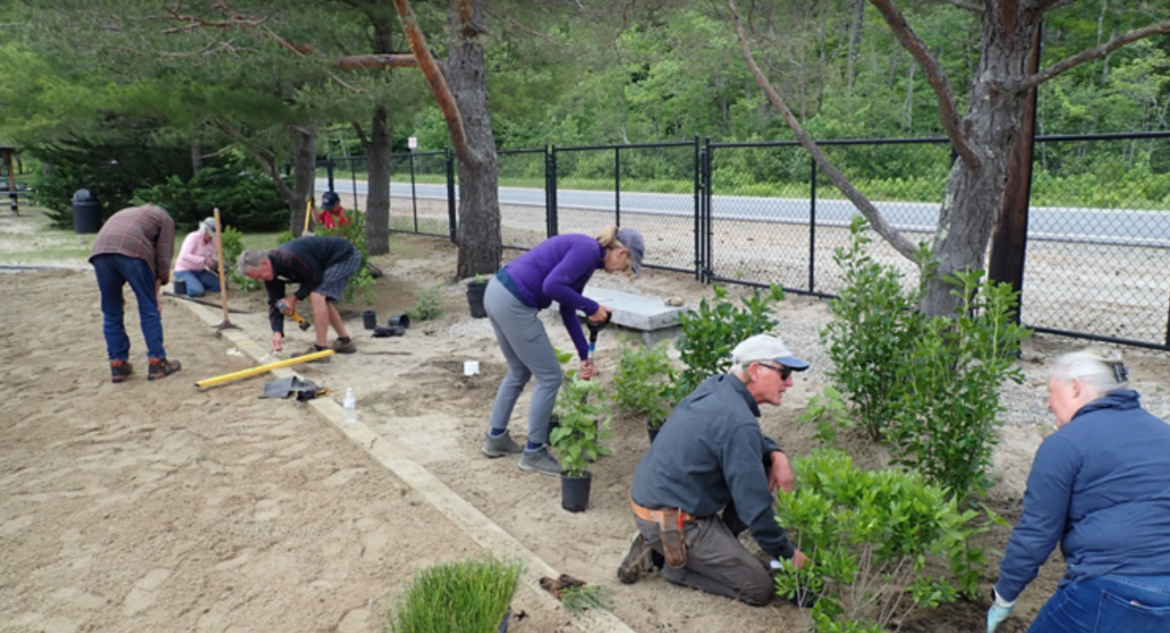By PAULA TRACY, InDepthNH.org
DURHAM – A big parking lot at the University of New Hampshire where students’ vehicles will soon be parked could be the site of a national study of stormwater and its impacts.
The data and strategies to deal with that runoff could have a direct impact on protecting New Hampshire lakes from cyanobacteria and other ailments associated with storm runoff.
The good news came to the state on the future of studying stormwater here when the Biden-Harris Administration announced the University of New Hampshire’s Stormwater Center is one of four new Centers of Excellence for Stormwater Control Infrastructure Technologies across the country.
The centers will share in $5 million in grants to be distributed by the U.S. Environmental Protection Agency.
The program based in Durham and three others will provide a national clearinghouse for new and emerging stormwater control technologies.
It comes at a time when the state is facing increasing problems on its lakes with cyanobacteria, a blue green algae that can emit neuro toxins which can kill dogs, livestock and wildlife and cause illness in humans.
An important food to fuel growth of cyanobacteria or blue green algae in New Hampshire’s lakes right now is stormwater runoff, particularly after large storms which seem to be increasing with climate change.
The water is often full of nutrients and phosphorus that wash from roadways and lawns into the lakes, streams and ponds, allowing cyanobacteria to feed and grow in warm conditions.
New Hampshire has seen a record early season of blooms of cyanobacteria this year, in part due to a particularly warm past winter.
But for some reason, it has not been so evident in recent weeks. A link to today’s map https://www.arcgis.com/apps/dashboards/8d84a6b03acb4efaab571b222c78447b by the state shows current cyanobactria warnings or alerts at Long Pond in Pelham and Sebbins Pond in Bedford and warnings or advisories for Cobbetts Pond in Windham and Gorham Pond in Dunbarton.
Often after large storm events, warnings and advisories for the potentially toxic blooms become more noticed by those using the lake and the state that monitors it.
Fecal bacteria or e coli warnings are also more common at beaches after storms that wash feces of warm blooded animals into the water. Current state fecal bacteria warnings are up for Pawtuckaway State Park and Argue Recreation Beach in Pittsfield.
The federal government said the new national Centers of Excellence will play an important role in improving stormwater infrastructure across the country by conducting research and providing technical assistance to state, tribal and local governments.
“Our waterways are treasured resources and economic engines for communities, and at EPA we strive to make sure waterways are both fishable and swimmable,” said EPA Acting Assistant Administrator for Water, Bruno Pigott.
“Stormwater runoff carries pollution from streets and land into our waterways and poses a significant challenge for water quality.”
In addition to UNH, grants will go to The University of Oklahoma; The Board of Regents Nevada System of Higher Education; and The Center for Watershed Protection, Inc.
The national goal from this is to enhance efforts to support the nation’s water infrastructure and protect water quality.
EPA has also selected the Center for Watershed Protection, Inc., to establish a national electronic clearinghouse that contains information about new and emerging stormwater control infrastructure technologies and funding approaches.
The national electronic clearinghouse will be populated with research, best practices, and outreach from each Center of Excellence, and promoted with other organizations to expand the availability of water technical assistance, including States, Tribes, local government and disadvantaged communities.
Federal officials said it is a complicated problem for communities to manage.
The grant recipients will play an important role in conducting research on new and emerging stormwater control infrastructure technologies and alternative funding approaches and provide technical assistance and support stormwater infrastructure improvements that safeguard the environment, improve stormwater management and climate resilience, and advance environmental justice.
Stormwater originates from heavy rain and meltwater from snow, which can become groundwater if it soaks into soil. It evaporates, is stored on depressed land surfaces in ponds and puddles or added to surface water as runoff to water bodies.
Plants and berms reduce or delay stormwater runoff by intercepting it and delaying its entrance into water bodies by taking it into root systems.
David Neils, chief aquatic biologist for the NH DES said an unprecedented number of cyanobacteria warnings on Lake Winnipesaukee in early June, which have since dissipated, are likely due to a warmer than normal winter, a lot of stormwater which entered the lake from last summer, the amount of shoreline development and the possibility that the recently confirmed presence of an invasive species, spiny water fleas contributed to the blooms.
Stormwater carrying street pollutants to a storm drain from more impervious surfaces like parking lots, roads, buildings, compacted soil developed areas are considered a factor in adverse lake health conditions.
During a first flush of a rainstorm, polluted water enters storm drains in areas with high proportions of impervious surfaces. This runoff can also go into septic and sewer systems not functioning properly.
Daily human activities resulting in deposition of pollutants on roads, lawns, roofs, farm fields, and other land surfaces can contribute to degradation of the water.
Trash, sediment, nutrients, bacteria, pesticides, metals, and petroleum byproducts all are unhealthy for the water and wash in.
Some lake associations in the state have begun to build rain gardens, or simply berms which slow or prevent storm water from getting into a lake. It is something called biofiltration.
An example of that this summer was work done by volunteers in New London at Little Lake Sunapee.





